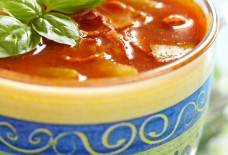Arabs in Indonesia: Historical and Modern Arab Influence
By Evan Ploeckelman / Arab America Contributing Writer
Indonesia is an archipelago nation in southeast Asia with the fourth highest population in the world. Did you know, though, that Indonesia has the highest population of Muslims out of any country in the world? This is due to its history, which was heavily influenced by Arab traders. Along with religion, the historical presence of Arabs in the region has led to the establishment of an Arab Indonesian community. This has contributed significantly to the culture of Indonesia and nearby Malaysia, Singapore, and Brunei.
History of Arabs in Indonesia:
Arab traders had a presence in the region before Islam, but their presence increased dramatically during the Islamic era. Most of these Arab traders were from the Persian Gulf region and present-day eastern Yemen. They came primarily to trade spices such as nutmeg, clove, and galangal, along with other goods from Southeast and East Asia. Many of these traders established kingdoms and sultanates on the various islands of the Indonesian Archipelago. Muslim missionaries from the Arab world introduced Islam to Indonesia, first to the northern part of Sumatra. This region, the province of Aceh, is currently the most Muslim area of Indonesia, with the special right to implement Sharia law within the provincial borders.
Throughout the centuries, Muslim missionaries from Arab regions of the Middle East spread Islam throughout the archipelago, replacing the previous Hindu and Buddhist culture and mixing Indonesian culture with Muslim and Arab culture. This led to a succession of sultanates on various islands, including the sultanates of Pajang, Mataram, Banten, and Pontianak. These kingdoms continued to mix Arab and native Indonesian culture, cementing Arab influence in the archipelago.
During the colonial era, a succession of European colonial powers conquered Indonesia. These include Portugal in the 16th century, the Dutch in the 17th century, the British in the 18th century, and even the Japanese for a short time during World War II. Arab influence in the islands weakened extensively during these centuries, but Islam remained strong as a unifying force among the archipelago. During this time, sultanates remained as semi-autonomous areas while still being loyal to the ruling colonial power. After World War II, Indonesia obtained independence from the Dutch, and they consolidated all of the separate sultanates by 1950.
Arab Indonesians:
According to the Indonesian 2005 census, there are 87,227 Arabs living in Indonesia, making up 0.04% of the total population. However, the amount of people with partial Arab ancestry, whether known or unknown, could number into the millions. They live mostly on the islands of Java (the most populous island and the home of the capital Jakarta) and Sumatra. The biggest communities are in larger cities such as Jakarta, Pekalongan, Solo, and Palembang. During the independence of Indonesia, there was a political push, led by groups such as the Persaturan Arab Indonesia. Their main goals was to remove ties to the Arab world and identify more with Indonesia. While not all Arabs supported these groups, a majority did support these groups, and today, Arabs have integrated into Indonesian culture.
The Arab Indonesians have retained many aspects of Arab culture. Islam is extremely prevalent among the community, as up to 98% practice the faith (compared to 88% of the general population). Gambus music, which originates from Yemen and is named after the stringed instrument qanbus, is quite popular among Indonesian Arabs. The ensembles often consist of lutes, marawis and dumbaks (both a type of drum), accordions, tambourines, and sulings (a type of flute). This type of music is typically played for weddings or other special events. Arab cuisine, specifically from Yemen, is also common, such as Nasi kebuli (the Indonesian name for pilaf rice), mandi rice, and murtabak.
Arab Influence on Indonesia:
Arab culture has also influenced Indonesian culture. Islam is the majority religion across the archipelago, with about 88% of the population practicing. Many mosques have designs like those in the Middle East, but they are instead made out of local materials like wood. Arab culture has also influenced the structure of the local government. In fact, there remains one semi-autonomous sultanate within the borders of Indonesia called the Sultanate of Yogyakarta. While the population of the city itself is mostly Javanese and not Arab, we can see how Arab culture influenced this development. Furthermore, nearby Malaysia, Singapore, and Brunei all show Islamic influence for the same reasons as Indonesia.
The national language of Indonesia, Bahasa Indonesia, along with the related language of Malaysia and Singapore, Bahasa Melayu, also have significant Arabic influence. For example, selamat or salam, from Arabic salam, is a common greeting in Bahasa Indonesia. Other words, such as the days of the week, religious and Islamic vocabulary, and other words orignate from Arabic. Some examples include ilah, from Arabic ilah, god; Alkitab, from Arabic al-kitab, the Bible (kitab on its own means book); Sabtu, from Arabic as-sabt, saturday, and jemaat, from jima’a, group or, specifically in Bahasa Indonesia, congregation.
Check out Arab America’s blog here!









